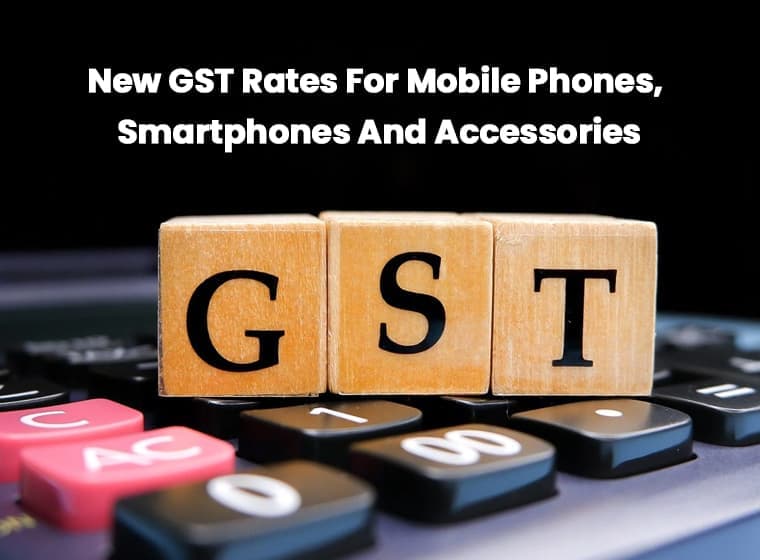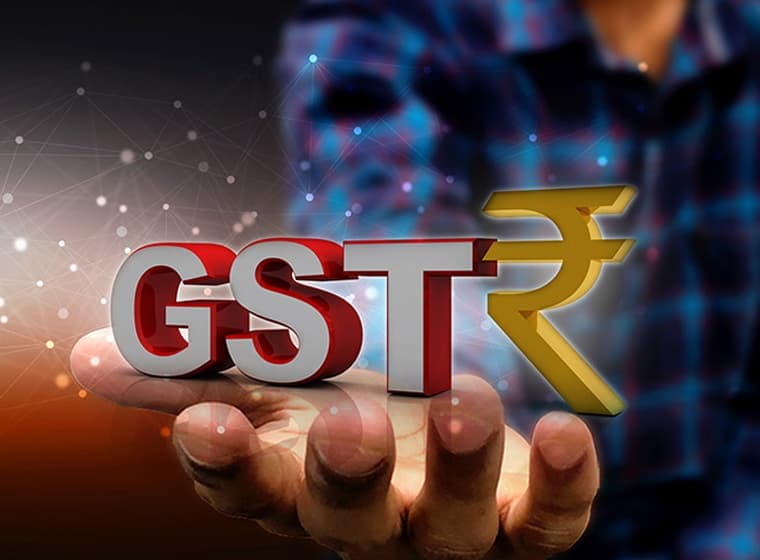GST Rates for Mobile Phones, Smartphones, and Accessories Have Changed
The Finance Minister announced during the presentation of Budget 2020 that GST returns will be simplified from April 2020 onwards. Let us know more about GST rates for Mobile Phones, Smartphones And Accessories.
Under the Goods and Services Tax, most commodities sold in India will be subject to one major tax bracket. This would result in lesser calculations and more ease in payment of the tax. Most of the revisions have been readily accepted by members of the public, while some have been heavily criticised. As each revision updates and improves the previous template, the current GST trends remain as the finance department coordinates with the banking institutions to set a reasonable slab. Here is the GST rates for mobile phones and their accessories.
Prior to the GST, the primary form of tax levied on mobile phones was VAT, and because VAT rates vary by state, setting a standard price for the phone was difficult. The GST tax rate is uniform across the country. As a result, the Indian market has gained much-needed consistency. As a result, mobile phones currently have a 12% GST rate and the HSN code 8517. The government profits handsomely from the GST levied on mobile phones, which sell like hotcakes. Economists believe that as GST levels fall, phone prices will fall even further.
GST Rates in the Present Scenario
The modern world has declared smartphones to be their primary concern, and with annual sales increasing year after year, the trend is here to stay. Several small and medium-sized businesses sell mobile phones and accessories, and the industry is thriving and expected to grow even more in the coming years.
In India, mobile phones and accessories are subject to the goods and services tax. The current GST rate on mobile phones is 12%, regardless of whether the device is a smartphone or a feature phone. On mobile electronic accessories, the GST rate is 18%.
Why GST
Prior to the GST, the primary form of tax levied on mobile phones was VAT, and because VAT rates vary from state to state, it was difficult to set a standard price for the phone. The tax rate under the GST is the same across the country. As a result, much-needed uniformity has crept into the Indian market. As a result, the current GST rate for mobile phones is 12%, and they have the HSN code 8517. As mobile phones sell like hotcakes, the government profits handsomely from the GST levied. Economists believe that as the GST levels fall, phones will become even more affordable.
The Goods and Services Tax (GST) is a value-added tax that is levied on all goods and services purchased in the country. We provide a GST rate finder service that displays the GST rates for all goods and services sold in India. This service is also referred to as the HSN finder.
Why GST
Prior to the GST, the primary form of tax levied on mobile phones was VAT, and because VAT rates vary from state to state, it was difficult to set a standard price for the phone. The tax rate under the GST is the same across the country. As a result, much-needed uniformity has crept into the Indian market. As a result, the current GST rate for mobile phones is 12%, and they have the HSN code 8517. As mobile phones sell like hotcakes, the government profits handsomely from the GST levied. Economists believe that as the GST levels fall, phones will become even more affordable.
The Goods and Services Tax (GST) is a value-added tax that is levied on all goods and services purchased in the country. We provide a GST rate finder service that displays the GST rates for all goods and services sold in India. This service is also referred to as the HSN finder.
GST rates differ between states.
As customers, we are entitled to 12% GST when purchasing a new phone. When a purchase is made from a dealer who lives and operates in the same state, the GST is split evenly between SGST and CGST. Meanwhile, if purchased from a foreign or migrant dealer, an IGST of 12% would apply, as would importing phones from abroad.
HSN Codes
Most phones and mobile accessories fall under HSN Chapter 85, with several tax slabs available. To file your invoice correctly, you must know the correct HSN code. Here are a few HSN codes for commonly purchased and used commodities.
The GST rate is 12%, regardless of whether the phone is a smartphone or a feature phone. The GST rate on mobile accessories is 18% and varies slightly depending on the product. Because mobile phones use wireless networks, they are included in Chapter 85 of the GST schedule. Here’s a look at the GST slab for the products.
Battery Issue
Indian phone manufacturers had requested that the government change the GST for lithium-ion batteries and charge a 12% tax on them because they are used in the manufacturing of the phone. The telephone parts were charged 12%, while the batteries were charged 28%, and it was this disparity that prompted the complaint. They did, however, report that having the SGST, IGST, and UGST affects the supply chain. It complicates interpretation and reduces the viability of small-scale production.
“The 12% GST on mobile manufacturing parts covers batteries that are to be inserted into the mobile.” “This measure has no revenue implications, but it will greatly alleviate the pain that our manufacturers are experiencing,” argues the Indian Cellular Association in a meeting with Revenue Secretary Hasmukh Adhia.
After the petition gained traction, the government reduced the GST rates on approximately 50 items, including washing machines and mobile accessories. The electric companies have assured customers that the benefits will be passed on to them in the form of lower prices.
For example, Rajeev Bhutani, Senior Vice President of Samsung India, stated, “Samsung is a consumer-centric company.” We are pleased to provide full benefits, i.e., a 7.81+% GST rate reduction, to all of our customers. It will increase demand for consumer electronics products both now and during the upcoming festival season. The decision also aided India’s mobile phone industry by lowering the tax on lithium-ion batteries.
How long is the GST certificate valid?
Once issued, the GST certificate is valid until it is cancelled, surrendered, or suspended. However, the GST certificate issued to taxable individuals has an expiration date. Learn about the GST registration and return process here.
According to the notification, what are “specified enterprises”?
According to the MSME Development Act of 2006, specified companies are those that have received goods and services from MSMEs but have not been paid within 45 days. More information on income tax return filing
What are the various methods of filing an income tax return?
You can file your income tax return on paper or electronically. When filing returns electronically, you may need to use a digital signature to validate the return forms. Find out more about ISO certification.
Is anyone eligible to join ISO?
ISO is not open to businesses or individuals. However, ISO membership is open to national standards organisations and other organisations that promote standardization. More information about NGO registration in India
What are the various acts under which an NGO is registered?
Societies, trusts, and profitable non-profit organisations are governed by the Indian Trust Act of 1882, the Societies Act of 1860, and the Companies Act of 1956. More information on MSME Registration Online.
Conclusion
GST (Goods and Services Tax): https://www.gst.gov.in/ (Goods and Services Tax) aims to bring all commodities in the country into a single tax bracket. Tax calculations and payments will be simplified as a result of the implementation of this new tax initiative. In this article, we attempted to gather detailed information on how GST applies to electronics, including smartphones and accessories.
1,279 Total Views



